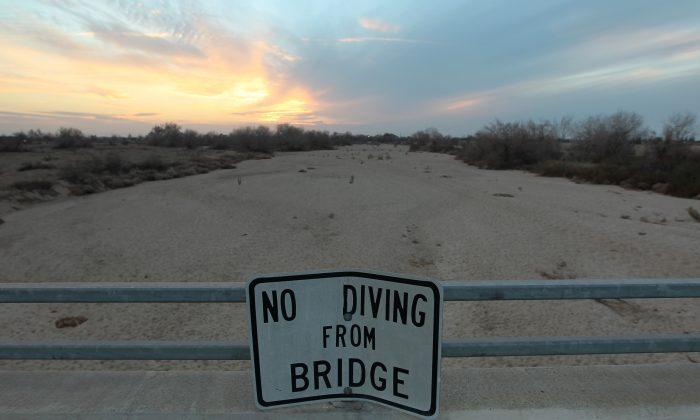I smile brightly looking into the bright blue eyes of my four-year-old daughter Mickie and see love, hope, and optimism for the future. However, I am saddened when I then think about how we are treating our environment and how she may grow up in a polluted world. And how, with the end of the El Nino rains, we still have not acted to adequately solve our water problems.
California’s commitment to 50 percent clean energy by 2030 is a great step in the right direction. Yet we need to be genuine about water—the reality is climate change is already affecting our water supply. At the same time our population has increased four-fold since 1950 to nearly 40 million, with little action to secure more safe water.
I’m against the tunnels. For too long southern California’s water has been dependent on the north. They are using us like a child withdrawing from an ATM. This is unsustainable and we need to implement regional solutions that help the entire state prosper.
Historically legislators, in fact my State Senate opponents, have done practically nothing over the last 50 years to build infrastructure and invest in new technology that prepares us and solves our water shortage. Even today, despite all the talk, the latest water legislation to protect aquifers does not go into full effect until 2020. Given how important water is to your life, this is practically criminal.
After over four years of drought, NASA scientists estimate that California is 12 trillion gallons short of what we need. Even with El Nino, the Sierra snowpack, which normally stores about 30 percent of our water supply, is only 89 percent of the April 1st average. Even after the rains, Lake Beryessa is still 30 feet short.
We need to take action now.
I am passionate about water and environmental issues and in Sacramento I will work hard to ensure we invest in new technologies like solar thermal desalination, create more storage and recycle existing water. To have the greatest conservation impact we need to support farmers adopting new irrigation technologies and in finding clean, environmentally responsible water.
This is where technology and innovations like solar thermal desalination are critical. California is a leader in innovation. I first started hearing of solar panels while growing up in the 1980s when there were many doubts about whether they could actually work and be cost-efficient. Times have certainly changed. Solar is saving many of us much-needed funds, including my own family. Every 2.5 minutes a new solar panel is being installed across the United States and the industry grew by 20 percent last year. Just think of where we would be now if we had started continuous investment in water innovations over the past 45 years.
We are only starting to realize the potential of investing in water. Currently a solar thermal system in central California will produce two million gallons of clean, fresh, safe water a day. It will then expand to supply five million gallons a day. Additionally, performance test show it can also process recycled agriculture water competitively to the cost of surface water.
This is just one strategy for wading through the water problem. Finding good storage south of Tracy pumps and building and approving water recycling are other aspects that need to be implemented.
When building new homes and businesses we need to think of water conservation in the same light as energy efficiency. California gets to tackle water with the same seriousness its addressed energy. Simple regulation changes can make a huge difference. Allowing water from washing machines (using biodegradable soap) to water your garden or lawn is an easy way to save water. We need to promote innovation and cut outdated red tape regulations.
A report released in June by scientists at the University of California–Davis, estimated that the drought had cost the state’s agricultural industry some $2.7 billion. California can’t afford to continue paying for the water crisis that damages our economy—solutions are needed now.
The good news is, with strong leadership, this crisis can drive innovation while protecting our environment and growing the economy. In my 20 years in the military we never waited until a threat was at the front door. We acted responsibly, to prevent and eliminate threats. As your next State Senator, I am committed to taking action to ensure our safe, secure, and prosperous future.
Gabe Griess is a retired lieutenant colonel of the United States Air Force (USAF) and a candidate for State Senate District 3 in California.
